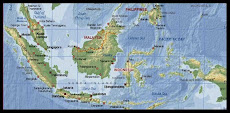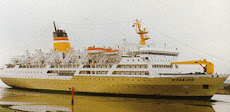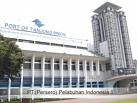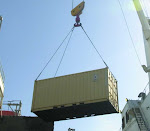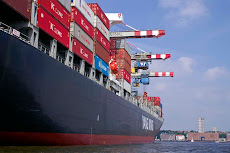The Government Regulation (PP), which functions as the implementation of the Law No. 17 Year 2008 on Shipping Affairs, is targeted to have a full draft from the Composing Team by next April 2009.
“We are now still composing the PP. The target to complete it is in April 2009, and then it will be socialized to all parties,” Harjogi, the Secretary-General for the Ministry of Transportation Affairs told the Ocean Week accompanied by the Chief Bureau of Legal Affairs of the Seat Transportation Directorate, Umar Aries, after the ceremony of donation to 491 families of stevedoring labors in Tanjung Priok Port recently.
With the completion of the PP, Harjogi said, it would be able to answer all parties, who so far were waiting for the clearance. Unfortunately, Harjogi refused to tell some of the content of the PP, especially the PP on ports and shipping business.
However, Harjogi promised that the PP might be able to accommodate all need of the stakeholders in the port and shipping business.
Meanwhile, businesspeople at stevedoring service as well as shipping lines are now still waiting for the issuance of the PP.
“It’s difficult for us to take business decision, because we haven’t known exactly what the content of the PP will be,” Hyrman Soemadiredja (Chairman of Maritime Care Society – MPM), the President Director of PT Hamparan Jala Segara told the Ocean Week in his office recently.
Numbers of shipping players also stated similar opinions with Hyrman. “Although we may gain more benefit (from it), especially after the ratification of Law No. 17/2008, we are still waiting for the issuance of the PP,” Yahya Zubir, the President Director of Spectra Line said.
A trustable source of the Ocean Week, who refused to mention name, said the Team for PP Drafting currently is working hard to finish it. “It may not be ready by the end of this year, but we’re trying to finish it by 2009, he said.
When answering about the opportunity given to national liners through various of government regulations, Harijogi disclosed that the chance must be really taken maximally by national merchant fleet to develop their business at least just like what they have got in the 1970s period.
“We are now still composing the PP. The target to complete it is in April 2009, and then it will be socialized to all parties,” Harjogi, the Secretary-General for the Ministry of Transportation Affairs told the Ocean Week accompanied by the Chief Bureau of Legal Affairs of the Seat Transportation Directorate, Umar Aries, after the ceremony of donation to 491 families of stevedoring labors in Tanjung Priok Port recently.
With the completion of the PP, Harjogi said, it would be able to answer all parties, who so far were waiting for the clearance. Unfortunately, Harjogi refused to tell some of the content of the PP, especially the PP on ports and shipping business.
However, Harjogi promised that the PP might be able to accommodate all need of the stakeholders in the port and shipping business.
Meanwhile, businesspeople at stevedoring service as well as shipping lines are now still waiting for the issuance of the PP.
“It’s difficult for us to take business decision, because we haven’t known exactly what the content of the PP will be,” Hyrman Soemadiredja (Chairman of Maritime Care Society – MPM), the President Director of PT Hamparan Jala Segara told the Ocean Week in his office recently.
Numbers of shipping players also stated similar opinions with Hyrman. “Although we may gain more benefit (from it), especially after the ratification of Law No. 17/2008, we are still waiting for the issuance of the PP,” Yahya Zubir, the President Director of Spectra Line said.
A trustable source of the Ocean Week, who refused to mention name, said the Team for PP Drafting currently is working hard to finish it. “It may not be ready by the end of this year, but we’re trying to finish it by 2009, he said.
When answering about the opportunity given to national liners through various of government regulations, Harijogi disclosed that the chance must be really taken maximally by national merchant fleet to develop their business at least just like what they have got in the 1970s period.
